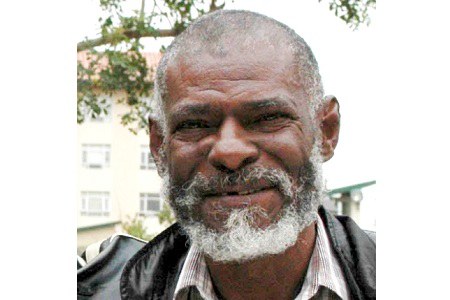Clyde Charles

On March 12, 1981, a white woman was walking along a road looking for help after her car blew out on the railroad tracks. A Black man walked up to her, accosted her, threatened her, grabbed her by the neck, and dragged her from the road to the side of some buildings. He pulled her hair, punched her in the face, choked her, and bit her. He then ordered her to take off her pants, stockings, and underwear, and then raped her. He repeatedly choked her and hit her head with a pipe.
After the rape, the attacker cleaned the woman’s fingernails with grass. The woman ran away and was picked up by Deputy Domangue in a patrol car. Deputy Domangue identified Clyde Charles as a hitchhiker whom he had ordered to get off the road an hour before the crime was committed.
The woman later identified Mr. Charles as her attacker in a one-on-one show-up at Terrebonne General Hospital. The defense claimed that the deputy gave the description to the woman before her identification. Nevertheless, Mr. Charles was convicted of aggravated rape on June 22, 1982, and was sentenced to life in prison at the Angola penitentiary.
The prosecution’s evidence included the the victim’s identification at the one-on-one show up and her testimony that the rapist called himself Clyde. A microscopic hair analyst discovered two Caucasian hairs on Mr. Charles’ shirt and testified that they were microscopically “similar,” but not conclusively identical, to hair from the woman’s head. Because there is not adequate empirical data on the frequency of various class characteristics in human hair, an analyst’s assertion that hairs are consistent or similar is inherently prejudicial and lacks probative value.
Deputy Domangue testified that Mr. Charles was wearing a dark jogging jacket with white stripes when he saw him (the woman testified that the attacker wore a dark jogging suit with stripes) and that Mr. Charles was wearing a red cap and blue jacket tied around his neck when he found him hitchhiking. The police found a red baseball hat and blue jean jacket near scene of the rape and Mr. Charles had admitted that he had been wearing a blue jacket. The prosecution also introduced spermatozoa found in the rape kit.
The case was appealed twice: Dec. 29, 1982, and Dec. 14, 1987. With assistance from the Innocence Project, Mr. Charles got back into court on August 1999. He was granted post-conviction DNA testing of the remaining semen evidence collected from the victim.
Testing was performed on one of two vaginal swabs. A large quantity of spermatozoa was recovered as well as very few epithelial cells. An analysis of the STR profile from the spermatozoa of one slide was reviewed by Dr. Smith at the FBI Crime Laboratory. It was determined that a highly discriminating genetic profile for the sperm source from the vaginal swab had been obtained for five out of nine STR genetic loci, according to another report from Forensic Science Associates. Later, a blood reference sample from Mr. Charles was tested, and he was eliminated as the source of spermatozoa from the rape kit.
Mr. Charles, based on these exculpatory findings, was released on Dec. 17, 1999. In April 2000, Mr. Charles’ brother Marlo was arrested and imprisoned after DNA tests implicated him in the same crime. Mr. Charles had been locked up wrongfully for 19 years. For an in-depth look at this and other cases, please visit FRONTLINE – THE CASE FOR INNOCENCE.
Sadly, on Jan. 7, 2009, Mr. Charles passed away at his Louisiana home. He was 55 years old.

Time Served:
17 years
State: Louisiana
Charge: Rape, Assault
Conviction: Aggravated Rape
Sentence: Life without parole
Incident Date: 03/12/1981
Conviction Date: 06/24/1982
Exoneration Date: 12/17/1999
Accused Pleaded Guilty: No
Contributing Causes of Conviction: Eyewitness Misidentification, Unvalidated or Improper Forensic Science
Death Penalty Case: No
Race of Exoneree: African American
Race of Victim: Caucasian
Status: Exonerated by DNA
Alternative Perpetrator Identified: Yes
Type of Crime: Sex Crimes
Forensic Science at Issue: Hair Analysis
Year of Exoneration: 1999